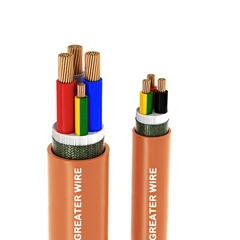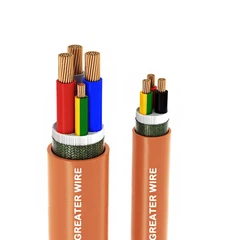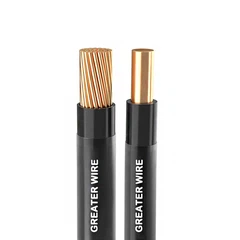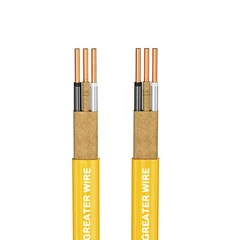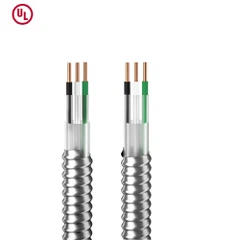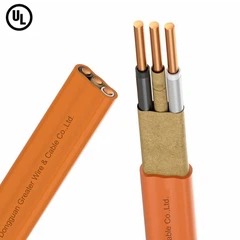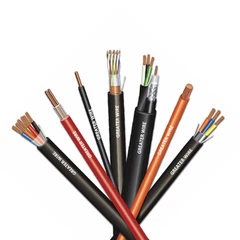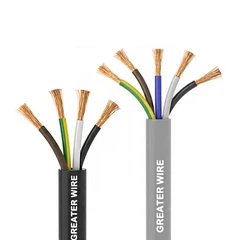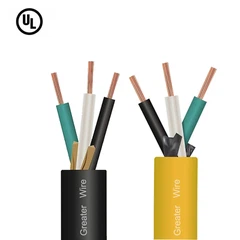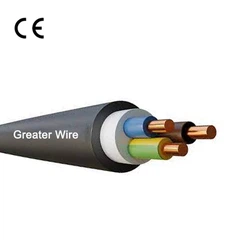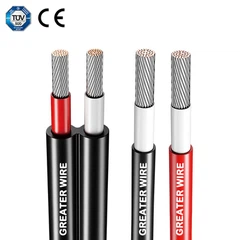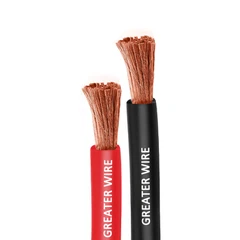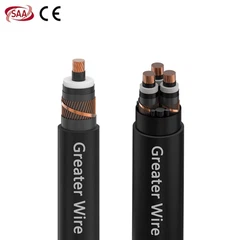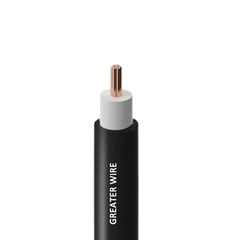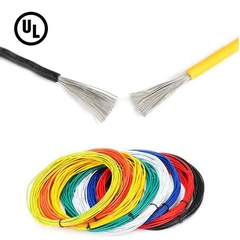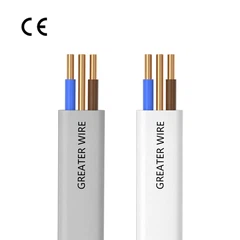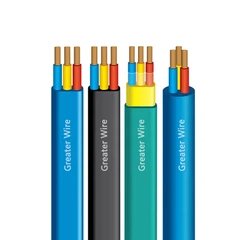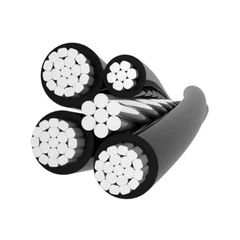In solar power systems, solar cables (or solar wires) play a vital role in transmitting electrical energy generated by solar panels to inverters, charge controllers, and other electrical components. These cables are often exposed to outdoor conditions, where they face constant exposure to ultraviolet (UV) radiation from the sun. As a result, the UV resistance of solar cables is a critical factor in determining their longevity, safety, and overall performance. In this article, we will explore the importance of UV resistance in solar cables, the materials used to enhance their UV resistance, and the standards that govern UV protection in solar installations.

1. The Importance of UV Resistance in Solar Cables
Solar cables are exposed to harsh environmental conditions, especially when they are installed outdoors in open areas where sunlight is abundant. Over time, the intense UV radiation from the sun can degrade materials, causing them to weaken, crack, or become brittle. If the solar wire insulation lacks adequate UV resistance, the cable could fail, resulting in electrical hazards, reduced energy efficiency, or even system shutdowns. To prevent these issues, it is crucial that solar cables are designed with high levels of UV resistance, especially for long-term outdoor use.
UV radiation, which is part of the sunlight spectrum, has a significant impact on the degradation of insulation materials. When solar cables are exposed to UV radiation, the energy from the sunlight breaks down the chemical bonds in the insulation material, leading to a loss of flexibility, discoloration, and eventually cracking. This degradation increases the risk of electrical shorts, exposure to electric shocks, and other safety issues. Therefore, UV resistance is one of the most critical properties of solar cables.

2. How UV Radiation Affects Solar Cables
UV radiation is a component of sunlight with wavelengths between 100 nm and 400 nm. It is divided into three categories:
UVA (315 nm - 400 nm): The least harmful but still capable of causing long-term damage to materials.
UVB (280 nm - 315 nm): More harmful than UVA and can cause significant material degradation, especially in cables that are not UV-protected.
UVC (100 nm - 280 nm): The most dangerous UV radiation, but it is mostly absorbed by the earth's atmosphere and does not significantly affect solar cables directly.
The intensity of UV radiation increases with the geographical location and elevation, meaning solar installations in areas closer to the equator or at higher altitudes are subjected to more intense sunlight. Moreover, cables that are exposed to sunlight for extended periods, such as those installed on rooftops or in open solar farms, experience continuous UV radiation, which accelerates the degradation process of poorly protected materials.
The degradation process typically includes:
Discoloration: Exposure to UV rays causes the insulation material of the solar cable to lose its color, usually turning it yellow or brown.
Cracking: Prolonged exposure to UV radiation can cause the material to become brittle and crack, which compromises the integrity of the cable.
Loss of Flexibility: UV degradation can cause the insulation to lose its flexibility, making it more prone to breakage when the cables are bent or subjected to mechanical stresses.
Reduced Insulation Effectiveness: As the insulation deteriorates, its ability to prevent electrical leakage and provide safety is compromised.
To prevent these issues, solar cables must be manufactured with UV-resistant materials or treated with additives that enhance their resistance to UV radiation.

3. UV Resistance in Solar Cable Insulation Materials
The insulation material is the primary factor that determines the UV resistance of solar wires. Several materials are commonly used in the construction of solar cables, and each material offers a different level of UV protection.
3.1 Cross-Linked Polyethylene (XLPE)
Cross-linked polyethylene (XLPE) is one of the most common insulation materials used in solar cables. XLPE offers excellent resistance to UV radiation due to the cross-linking process that strengthens the polymer structure.
UV Resistance: XLPE is inherently resistant to UV radiation and is widely used in outdoor solar cable applications. Its molecular structure allows it to retain its mechanical and electrical properties even when exposed to sunlight for prolonged periods.
Additional UV Protection: For extra protection, XLPE-insulated solar cables can be treated with UV stabilizers. These stabilizers help enhance the material's resistance to sunlight and prevent degradation over time.
3.2 Thermoplastic Elastomers (TPE)
Thermoplastic elastomers (TPE) are another popular choice for solar cables due to their flexibility and UV resistance. TPE combines the characteristics of both rubber and plastic, making it ideal for use in solar systems that require durable, flexible cables.
UV Resistance: TPE materials can be specifically engineered with additives that improve their resistance to UV radiation. As a result, TPE-insulated solar wires are highly resistant to UV degradation and are often used in environments with intense sunlight exposure.
Enhanced Durability: TPE's flexibility and UV resistance make it suitable for outdoor solar installations, particularly in systems that require high flexibility for easier installation and maintenance.
3.3 Polyvinyl Chloride (PVC)
Polyvinyl chloride (PVC) is an affordable and commonly used material for insulation in solar cables. While PVC itself does not offer as strong a resistance to UV radiation as XLPE or TPE, it can be enhanced with UV stabilizers to make it more suitable for outdoor use.
UV Resistance: Without UV stabilizers, PVC can degrade quickly when exposed to direct sunlight. However, solar wires made from PVC are often treated with UV inhibitors to improve their durability in outdoor conditions. These additives help prevent the cable from cracking, discoloring, or becoming brittle.
Suitability: PVC-insulated solar cables are generally suitable for areas with moderate sunlight exposure or for indoor applications. For installations in regions with high UV exposure, cables with XLPE or TPE insulation are often preferred.
3.4 Ethylene Propylene Diene Monomer (EPDM)
Ethylene Propylene Diene Monomer (EPDM) is a synthetic rubber material known for its excellent resistance to UV radiation, ozone, and weathering. EPDM is often used in solar cables where high flexibility and superior outdoor performance are required.
UV Resistance: EPDM provides excellent resistance to UV radiation, making it an ideal choice for solar cables that will be exposed to prolonged sunlight.
Durability: EPDM's inherent UV resistance, combined with its flexibility, makes it one of the best materials for outdoor solar wire applications. It can maintain its performance for extended periods without significant degradation.
3.5 Fluoropolymers (FEP, PFA, ETFE)
Fluoropolymers such as fluorinated ethylene propylene (FEP), perfluoroalkoxy (PFA), and ethylene tetrafluoroethylene (ETFE) are high-performance materials that are known for their exceptional resistance to UV radiation.
UV Resistance: Fluoropolymers have outstanding resistance to UV radiation and weathering, which makes them suitable for extreme environments and harsh outdoor conditions. These materials also offer superior heat resistance and chemical stability, making them ideal for high-performance solar installations.
Durability: Fluoropolymers retain their mechanical properties over long periods of UV exposure, making them one of the best choices for applications that require long-term outdoor durability.

4. Standards and Certifications for UV Resistance in Solar Cables
To ensure the safety, reliability, and longevity of solar cables, manufacturers must adhere to several international standards related to UV resistance. These standards govern the materials, construction, and performance of solar wires exposed to UV radiation.
4.1 IEC 60228
The International Electrotechnical Commission (IEC) standard IEC 60228 defines the requirements for electrical cables, including those used in solar power systems. This standard specifies the minimum requirements for solar cables, including insulation materials that must be resistant to UV radiation, weathering, and other environmental factors.
4.2 UL 4703
In the United States, UL 4703 sets the requirements for the construction and performance of solar cables. It includes specifications for UV resistance, as well as fire safety, flexibility, and durability. Solar wires that meet UL 4703 standards are tested for UV degradation, ensuring they are capable of withstanding exposure to sunlight over long periods.
4.3 TUV 2Pfg 1169/08
The TUV 2Pfg 1169/08 standard applies to solar cables used in photovoltaic systems and sets out criteria for UV resistance, including testing methods to ensure that cables can withstand prolonged sunlight exposure without significant degradation.
4.4 ISO 9001
While not specific to UV resistance, ISO 9001 certification is a general quality management standard that ensures manufacturers produce solar cables that meet stringent safety and performance criteria. This certification may involve tests for UV resistance as part of the overall quality assurance process.
GREATER WIRE is a leading cable company specializing in the manufacturing and supply of high-quality cable products. With years of industry experience, we offer a wide range of cables, including America UL cables, Australia SAA cables, VDE cables, and TUV cables, catering to various applications such as industrial, commercial, and residential use.
Contact us today for more information on our products and services. Our dedicated team is ready to assist you with all your cable needs.

